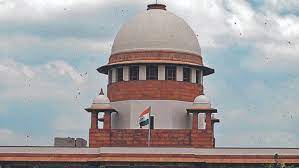The doctrine of merger is a common law doctrine that is rooted in the idea of maintenance of the decorum of hierarchy of courts and tribunals. The doctrine is based on the simple reasoning that there cannot be, at the same time, more than one operative order governing the same subject matter. The same was aptly summed up by this Court when it described the said doctrine in Kunhayammed & Ors. v. State of Kerala & Anr. [(2000) 6 SCC 359] (Para 17)
In the current case, as previously mentioned, the High Court’s judgment from the initial round dated 30.03.1990, noted that the disputed property included 8 cents of land, not just the building structure on it. As per the Doctrine of Merger, the judgments of the Trial Court and the First Appellate Court from the first round of litigation are absorbed into the High Court’s judgment dated 30.03.1990. This 1990 judgment should be regarded as the conclusive and binding order from the initial litigation. Following the principles of judicial discipline, lower or subordinate Courts do not have the authority to contradict the decisions of higher Courts. In the current case, the Trial Court and the High Court, in the second round of litigation, violated this judicial discipline by adopting a position contrary to the High Court’s final judgment dated 30.03.1990, from the first round of litigation. (Para 20)
In order to test the above agreement, we carefully examined the judgement of the Trial Court as also the First Appellate Court. What is discernible is that nowhere it is recorded the actual boundary or the measurements of the property in possession of the mother of the appellant (defendant therein). The respondents plaintiff therein had based her case on the ground that they had purchased 8 cents of open piece of land and the defendant therein had raised construction over some adjoining land, and had trespassed over part of her purchased land as such decree of possession be granted. (Para 22)
We are unable to appreciate the said argument of the respondents. Suit for possession has to describe the property in question with accuracy and all details of measurement and boundaries. This was completely lacking. A suit for possession with respect to such a property would be liable to be dismissed on the ground of its identifiability. Further, it may be noted that if the construction by the defendant were not made over 8 cents of purchased land, then the plaintiff therein would not have a claim to possession of the same. The argument thus has to be rejected not only on facts but also on legal grounds as discussed above. (Para 23)
The appeal is, accordingly, allowed. The impugned judgment and order of the High Court is set aside and that of the First Appellate Court dated 13.10.2003 passed by the Sub-Judge, Padmanabhapuram is restored and maintained. (Para 24)
SUPREME COURT OF INDIA
2024 STPL(Web) 12 SC
[2024 INSC 8]
Mary Pushpam Vs. Telvi Curusumary & Ors.
Civil Appeal No. 9941 of 2016-Decided on 03-01-2024.
https://stpllaw.in/wp-content/uploads/2024/01/2024-STPLWeb-12-SC.pdf







